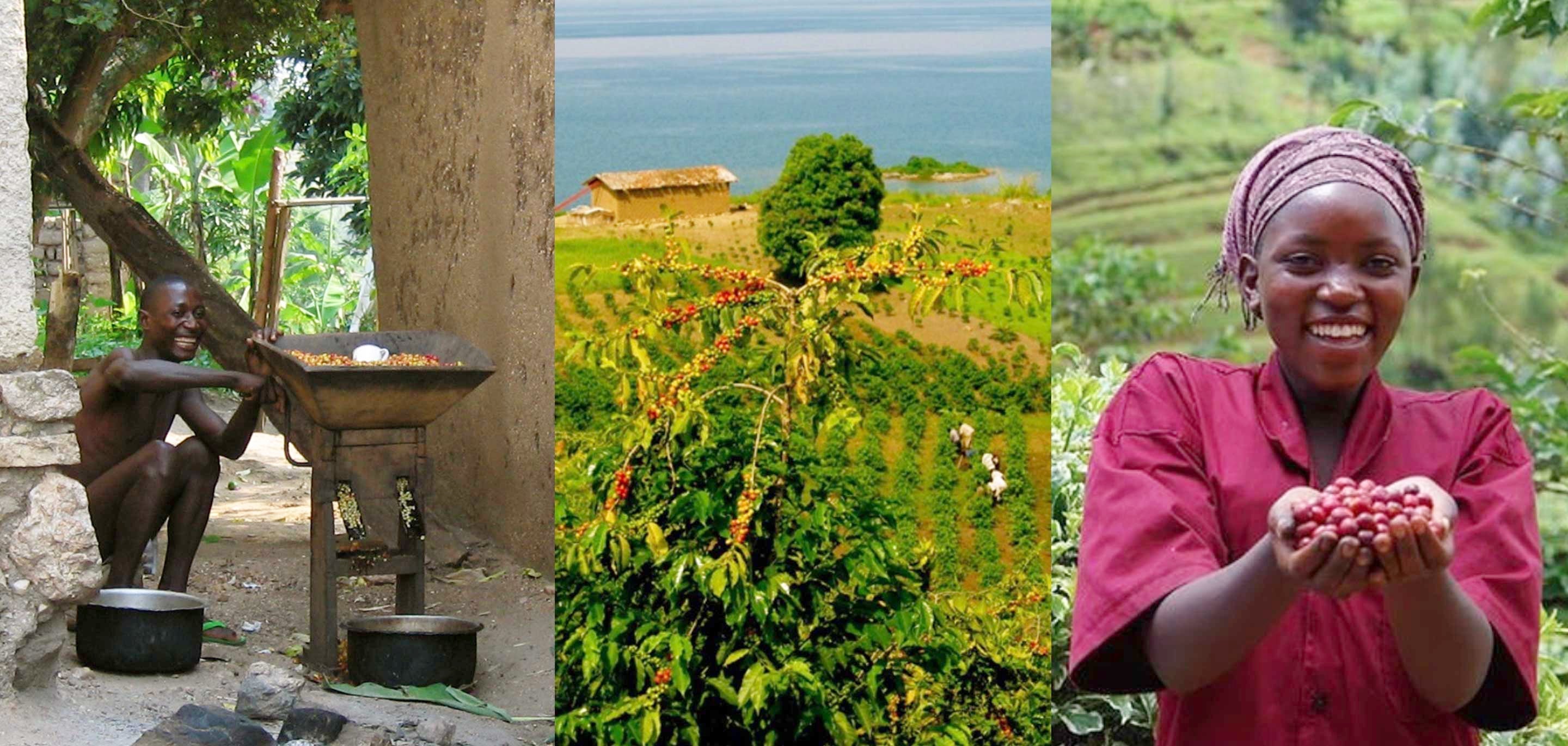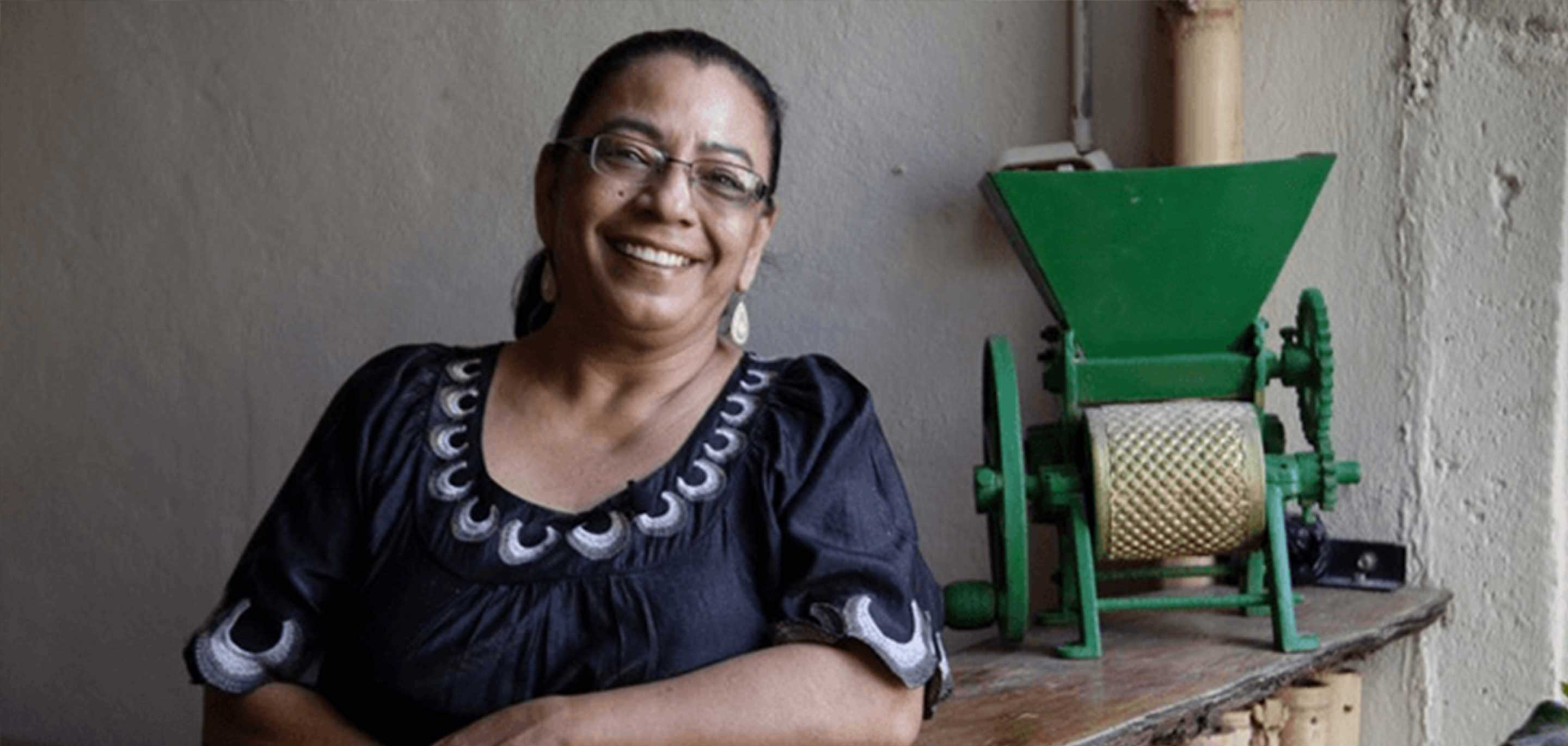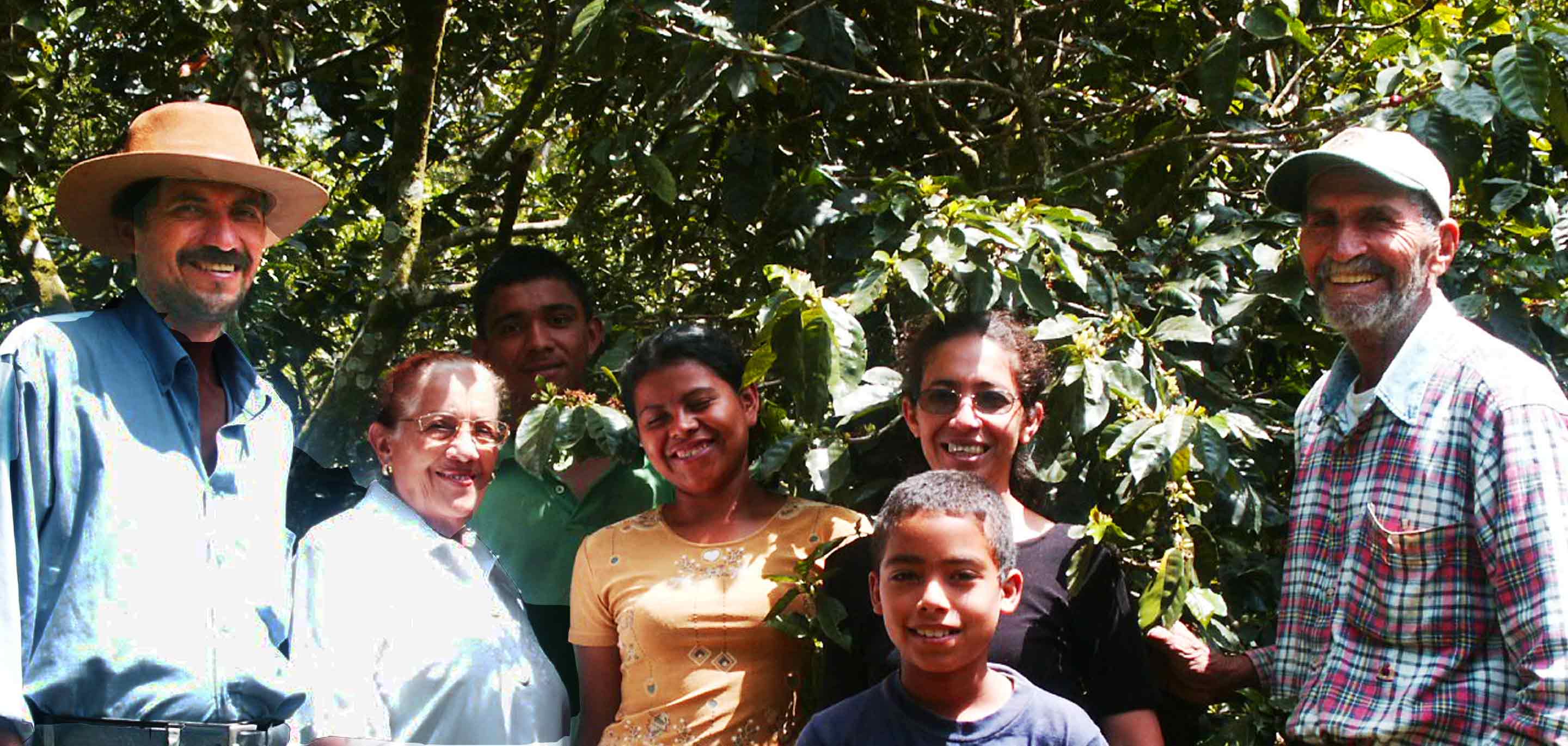
Our Blog
Ancient History of Pollination
View BY :
Ancient History of Pollination
“Go to your fields and your gardens, and you shall learn that it is the pleasure of the bee to gather honey of the flower, But it is also the pleasure of the flower to yield its honey to the bee. For to the bee a flower is a fountain of life, And to the flower a bee is a messenger of love, And to both, bee and flower, the giving and the receiving of pleasure is a need and an ecstasy.” Kahlil Gibran

There has been a lot of talk about pollinators in recent years, and how the declining populations of honeybees will affect food production. But have you ever wondered how it all started? When I began to write this, I had a rather broad understanding of pollination. However, the more I learned, the more questions I had. How did pollination come into being? Why is it so important to us now? Let’s take a deep dive into ancient history to learn a little more about the origins of pollination.

Pollination is believed to have begun around 130-150 million years ago. Basically, pollination is plant sex: the way plants spread and combine their genetic material to create new generations of plants. It is also essential to the production of fruit and seed crops that form the basis of our current food system. In the earliest forms of pollination, plants would scatter their pollen (male seed) to the wind and hope that a portion would land in the right spot on a female flower (stamen) and voila, there would be “chemistry”! However, this is an extremely unreliable way to reproduce. Although many plants still use this method, most have evolved into a primary relationship to collaborate with insects.

As early insects were flying around in search of food, they discovered how nutritious pollen was. Then several specialists decided to make pollen their main source and feed solely upon this nourishing golden dust of microspores. As the plants grew and thrived as a result of these relationships, they began to “sweeten the deal” by creating nectar for the services rendered. Flowers began to evolve bright colors to stand out and attract insects, distinguishing themselves from the green leaves and foliage that offered no sweet reward for the hard-working pollinators.
Millions of years have passed since the first flowers developed their pollination practice into the stunning displays we see today. This mutualistic relationship has changed the entire appearance of the earth, into the bright and colorful flowers and the vast variety of fruits and vegetables we all enjoy.

Learning the evolution of pollination from its ancient origins to the intricate and collaborative relationship that now occurs has been an inspiration to me. I hope the next time you receive a bouquet of flowers or taste the sweet juices of your favorite fruit, you think of the 130 million year journey it took to reach you.
Follow the Bee Bold Alliance Evolution
A regenerative campaign from Thanksgiving Coffee to protect pollinators
Recommended Reading
Back to the Blog-
![Rwanda Resilience in Every Cup: Coffee with a Climate Impact]()
Taste the Bright Future of Coffee
Our Rwanda Single Origin offers more than just incredible flavor—it’s a coffee that supports community resilience. Grown at high elevations in Musasa, Rwanda, by the Dukunde Kawa Cooperative.This medium roast delivers:- Tasting Notes: Vibrant citrus, delicate florals, and a smooth honey finish
- Mouthfeel: Silky and refreshing, with a bright, clean finish
- Perfect for: Pour over, drip, or French press—ideal for your morning clarity ritual
Rwanda Single Origin Coffee with citrus, floral, and honey tasting notes from Dukunde Kawa.
Why Dukunde Kawa Coffee Matters
Dukunde Kawa means “Let’s love coffee”—a name that reflects their commitment to people, planet, and flavor. This Rwandan cooperative is internationally recognized for combining exceptional quality with climate action.
Here's what climate resilience in action looks like:- 2,500+ clean cook stoves installed, reducing wood use by 70%
- Tree nurseries restoring biodiversity and combating soil erosion
- Women’s leadership with 80% women participation at the Ruli washing station
Every bag of Rwanda Single Origin supports these impactful programs, making every cup an act of regeneration and reciprocity.
Sources: Dukunde Kawa Sustainability Programs and Thanksgiving Coffee Dukunde Kawa Story
Rwanda Coffee Farm
Brew a Better Morning, Support a Better Future
Every time you brew Rwanda Single Origin, you:- Support healthier homes with clean cook stove initiatives
- Restore forests and farms through reforestation efforts
- Empower women farmers, nurturing local leadership
Recipe: Cold Brew for Summer Brightness
Show off the bright notes of Rwanda Single Origin with this easy cold brew:- Coarse grind 1 cup of beans
- Steep in 4 cups of filtered water for 12-14 hours
- Serve over ice with a twist of fresh orange peel
Refreshing, vibrant, and perfect for a summer coffee ritual.
Explore More Flavor Stories
Lavender Grace is the Sustainable Ecology Advocate for Thanksgiving Coffee Company
From the RoasteryRwanda Resilience in Every Cup: Coffee with a Climate Impact
read more -
![Women Powering Change: SOPPEXCCA's Revolutionary Approach to Economic Justice in Coffee]()
The Story Of SOPPEXCCA: Empowerment Through Coffee
In the verdant highlands of Jinotega, Nicaragua, a revolutionary approach to gender equity is transforming the coffee industry. Led by the visionary Fátima Ismael, SOPPEXCCA cooperative operates on a powerful belief: "Women's independence can only be achieved through economic autonomy and awareness."
"This groundbreaking initiative doesn't just produce exceptional coffee – it creates a model for sustainable economic justice." – Thanksgiving Coffee Company
What makes this partnership unique is SOPPEXCCA's pioneering recognition of women's traditionally invisible contributions to coffee production. This approach addresses a global challenge documented extensively by international organizations including the United Nations.
Fátima Ismael, SOPPEXCCA'S General Manager
The $40,000 Unpaid Work Fund: Valuing Invisible Labor
Since 2013, Thanksgiving Coffee Company has committed an additional $0.10 per pound of green coffee purchased from SOPPEXCCA – specifically allocated to recognize women's unpaid work. This initiative has now generated over $40,000 supporting women's economic empowerment.
The Global Context of Unpaid Labor
According to UN Women research:
- Unpaid care work is essential to functioning economies but often goes uncounted and unrecognized
- Women—particularly from low-income, migrant, and racialized groups—perform more than three-quarters of unpaid care and domestic work globally
- If women's unpaid work were assigned monetary value, it would exceed up to 40% of GDP in some countries
Measurable Impact in Nicaragua
The SOPPEXCCA initiative has created transformative changes for women:
- Improved relationships among women in rural communities
- Increased active participation in economic decision-making processes
- Development of creative potential within family economies
- Financial independence through personal savings accounts
- Growing cooperative membership among women
"8 March ... Day of commemoration and new commitments for a world of equality, equity and respect .. Greetings female producers, friends and companions who have been with this organization on their way that has not been easy but together we have overcome a thousand adversities and will continue to be fighting ..." Soppexcca
Woman Farmers of Soppexcca Cooperative - Jinotego, Nicaragua
Environmental Stewardship Meets Social Justice
Shade Grown Coffee: Critical Habitat for Migratory Songbirds
SOPPEXCCA's commitment extends beyond economic justice. Their shade-grown cultivation methods create essential winter habitats for migratory songbirds, demonstrating how sustainable agriculture directly contributes to biodiversity conservation.
"When you choose SOPPEXCCA coffee, you're supporting both women's empowerment and environmental stewardship – values at the heart of Thanksgiving Coffee Company."
Woman Farmers from the Soppexxcca Cooperative - Jinotega, Nicaragua
The Economic Impact Of Ethical Investment
UN Women's research reveals that investing in care infrastructure creates three times more jobs than equivalent investment in construction, with 70-90% of these jobs benefiting women.
The SOPPEXCCA fund represents precisely this kind of strategic investment.
Read about our support for the women of Soppexcca:
"Recognizing the Value of Womens Unpaid Work".
Celebrate the Women Coffee Farmers of Soppexcca
Try this delicious coffee and support a more balanced and just economy for the women of Soppexcca.
Lavender Grace is the Sustainability Consultant for Thanksgiving Coffee Company.
international woman's dayWomen Powering Change: SOPPEXCCA's Revolutionary Approach to Economic Justice in Coffee
read more

Taste the Bright Future of Coffee
- Tasting Notes: Vibrant citrus, delicate florals, and a smooth honey finish
- Mouthfeel: Silky and refreshing, with a bright, clean finish
- Perfect for: Pour over, drip, or French press—ideal for your morning clarity ritual
Rwanda Single Origin Coffee with citrus, floral, and honey tasting notes from Dukunde Kawa.
Why Dukunde Kawa Coffee Matters
Dukunde Kawa means “Let’s love coffee”—a name that reflects their commitment to people, planet, and flavor. This Rwandan cooperative is internationally recognized for combining exceptional quality with climate action.
- 2,500+ clean cook stoves installed, reducing wood use by 70%
- Tree nurseries restoring biodiversity and combating soil erosion
- Women’s leadership with 80% women participation at the Ruli washing station
Every bag of Rwanda Single Origin supports these impactful programs, making every cup an act of regeneration and reciprocity.
Sources: Dukunde Kawa Sustainability Programs and Thanksgiving Coffee Dukunde Kawa Story
Rwanda Coffee Farm
Brew a Better Morning, Support a Better Future
- Support healthier homes with clean cook stove initiatives
- Restore forests and farms through reforestation efforts
- Empower women farmers, nurturing local leadership
Recipe: Cold Brew for Summer Brightness
- Coarse grind 1 cup of beans
- Steep in 4 cups of filtered water for 12-14 hours
- Serve over ice with a twist of fresh orange peel
Explore More Flavor Stories
Lavender Grace is the Sustainable Ecology Advocate for Thanksgiving Coffee Company
Rwanda Resilience in Every Cup: Coffee with a Climate Impact
read more
The Story Of SOPPEXCCA: Empowerment Through Coffee
In the verdant highlands of Jinotega, Nicaragua, a revolutionary approach to gender equity is transforming the coffee industry. Led by the visionary Fátima Ismael, SOPPEXCCA cooperative operates on a powerful belief: "Women's independence can only be achieved through economic autonomy and awareness."
"This groundbreaking initiative doesn't just produce exceptional coffee – it creates a model for sustainable economic justice." – Thanksgiving Coffee Company
What makes this partnership unique is SOPPEXCCA's pioneering recognition of women's traditionally invisible contributions to coffee production. This approach addresses a global challenge documented extensively by international organizations including the United Nations.
Fátima Ismael, SOPPEXCCA'S General Manager
The $40,000 Unpaid Work Fund: Valuing Invisible Labor
Since 2013, Thanksgiving Coffee Company has committed an additional $0.10 per pound of green coffee purchased from SOPPEXCCA – specifically allocated to recognize women's unpaid work. This initiative has now generated over $40,000 supporting women's economic empowerment.
The Global Context of Unpaid Labor
According to UN Women research:
- Unpaid care work is essential to functioning economies but often goes uncounted and unrecognized
- Women—particularly from low-income, migrant, and racialized groups—perform more than three-quarters of unpaid care and domestic work globally
- If women's unpaid work were assigned monetary value, it would exceed up to 40% of GDP in some countries
Measurable Impact in Nicaragua
The SOPPEXCCA initiative has created transformative changes for women:
- Improved relationships among women in rural communities
- Increased active participation in economic decision-making processes
- Development of creative potential within family economies
- Financial independence through personal savings accounts
- Growing cooperative membership among women
"8 March ... Day of commemoration and new commitments for a world of equality, equity and respect .. Greetings female producers, friends and companions who have been with this organization on their way that has not been easy but together we have overcome a thousand adversities and will continue to be fighting ..." Soppexcca
Woman Farmers of Soppexcca Cooperative - Jinotego, Nicaragua
Environmental Stewardship Meets Social Justice
Shade Grown Coffee: Critical Habitat for Migratory Songbirds
SOPPEXCCA's commitment extends beyond economic justice. Their shade-grown cultivation methods create essential winter habitats for migratory songbirds, demonstrating how sustainable agriculture directly contributes to biodiversity conservation.
"When you choose SOPPEXCCA coffee, you're supporting both women's empowerment and environmental stewardship – values at the heart of Thanksgiving Coffee Company."
Woman Farmers from the Soppexxcca Cooperative - Jinotega, Nicaragua
The Economic Impact Of Ethical Investment
UN Women's research reveals that investing in care infrastructure creates three times more jobs than equivalent investment in construction, with 70-90% of these jobs benefiting women.
The SOPPEXCCA fund represents precisely this kind of strategic investment.
Read about our support for the women of Soppexcca:
"Recognizing the Value of Womens Unpaid Work".
Celebrate the Women Coffee Farmers of Soppexcca
Try this delicious coffee and support a more balanced and just economy for the women of Soppexcca.
Lavender Grace is the Sustainability Consultant for Thanksgiving Coffee Company.
Women Powering Change: SOPPEXCCA's Revolutionary Approach to Economic Justice in Coffee
read more
Pioneering Regenerative Agriculture
High in Nicaragua's pristine Arenal Forest Reserve, at 1,500 meters above sea level, Finca los Pinos stands as a testament to agricultural transformation. Here, Byron Corrales and his family have spent over four decades pioneering a different way of farming coffee. Since embracing organic practices in 1986, they've developed an innovative approach that works in perfect harmony with nature. Through their dedication to biodynamic farming, they've not only twice earned top honors for their extraordinary coffee, but they've also created a model for sustainable agriculture that's changing how we think about coffee cultivation.
Sarah Corrales on her families coffee farm
Byron Corrales hugging a tree on his family coffee farm
A Legacy of Excellence
Our relationship with the Corrales family spans three generations, witnessing their evolution from traditional farming to becoming leaders in biodynamic agriculture. Byron's innovative spirit led him to develop the exceptional Maracaturra variety, a unique hybrid that produces remarkably large beans – distinctively bigger than typical Arabica coffee beans. This size isn't just for show; it allows for exceptional taste elements that smaller beans simply cannot achieve, delivering a remarkable sweetness and richness in every cup.
Benita Corrales, Byron's mother
The first meeting with Thanksgiving Coffee Company in 1992- Left Byron Corrales, Right Arnulfo Corrales
Arnulfo Corrales, Byron's father
Left to right - Thanksgiving Coffee's Co-Founder Paul Katzeff, Byron Corrales, and Nick Hodgkins (Etico -The ethical trading company)
the Art Of Processing
Byron with drying natural Maracaturra coffee beans.
Corrales' artisanal approach to processing begins long before the cherries reach the beneficio (drying patio). On his farm, every element serves an integral function in creating exceptional coffee. This includes the carefully selected forage crops sustaining his cattle, whose manure enriches the compost used around the coffee trees, as well as the diverse pollinators - from honeybees to other beneficial insects - that support optimal cherry development.
For Corrales, successful coffee processing stems from creating a balanced, thriving ecosystem that produces the highest quality cherries possible for processing. This foundation of environmental harmony directly influences the clarity and complexity of his final cup.
The Natural process is when the coffee cherries are dried whole, without removing the pulp or using water or machines, and has become Byron’s preferred method for many reasons, as he explained in this video. It is a very good choice to reduce the use of fossil fuels and for water conservation, as well as the added antioxidant health benefits.
The Living Systems Of Los Pinos
At Finca los Pinos, every element serves multiple purposes in an intricate dance of mutual support:
- Native and planted trees provide essential shade and soil health
- Free-ranging cattle contribute to natural fertilization cycles
- Coffee cherry pulp (cascara) is recycled into nutritious cattle feed
- Birds and beneficial insects maintain natural pest control
- Pine trees create unique conditions that enhance both soil and coffee quality
Los Pinos coffee farm looking out over the forest
Soil: The Foundation of Life
Byron Corrales with his hands full of soil
Byron's approach to soil health demonstrates the core principles of regenerative agriculture. "The farmers that produce with agrochemicals and herbicides destroy the life of the soil," he observes. "We protect it." This protection includes:
- Maintaining ground cover to retain moisture
- Supporting microorganism and mycorrhizal networks
- Using natural fertilization methods
- Working with, rather than against, natural processes
“I feel really happy that those who drink my coffee are drinking a cup of life”
Byron Corrales
Climate Resilience Through Diversity
Great video produced by Viva La Finca - Virtual origin experience - Byron Corrales of Finca Los Pinos
Understanding the challenges of climate change, Byron has implemented robust adaptation strategies:
- Diverse tree species for enhanced shade coverage
- Strengthened soil biology
- Natural mineral enrichment
- Water conservation systems
The Unique Maracaturra Experience
This regenerative approach culminates in the cultivation of Maracaturra, a special variety found only at Finca los Pinos. This unique hybrid of Maragoype and Caturra (Bourbon) produces a truly exceptional coffee with:
- Juicy apricot aromatics
- Rich cashew nuttiness
- A deeply toned sweet cacao finish
- Remarkable sweetness unique to the large bean size
- Complex flavor elements impossible to achieve with conventional varieties
A Vision for the Future
"I want to transmit our family's art, our work of many years, discovering the flavors we've learned to bring forth from our mountains, expressed in this cup by way of respect for our environment," Byron shares. This respect for environment and commitment to regenerative practices creates coffee that is, in Byron's words, "the expression of life and the life energy of all the living beings who live in our community."
The Corrales Family from one of our origin trips.
Each cup of Byron's coffee embodies a powerful truth: regenerative agriculture can produce extraordinary coffee while healing the earth.
Our Byron's Blend is where ancient farming wisdom meets modern artistry. By masterfully combining washed and natural processed Maracaturra coffees, we create a harmonious cup that showcases the finest expressions of both methods. The result is more than a blend – it's a testament to coffee craftsmanship at its peak.
As Byron himself reminds us with characteristic wisdom: we are "celebrating with joy the responsibility of protecting the future of our generations." In every sip, you taste that promise.
Lavender Grace is the Sustainability Consultant for Thanksgiving Coffee Company.

